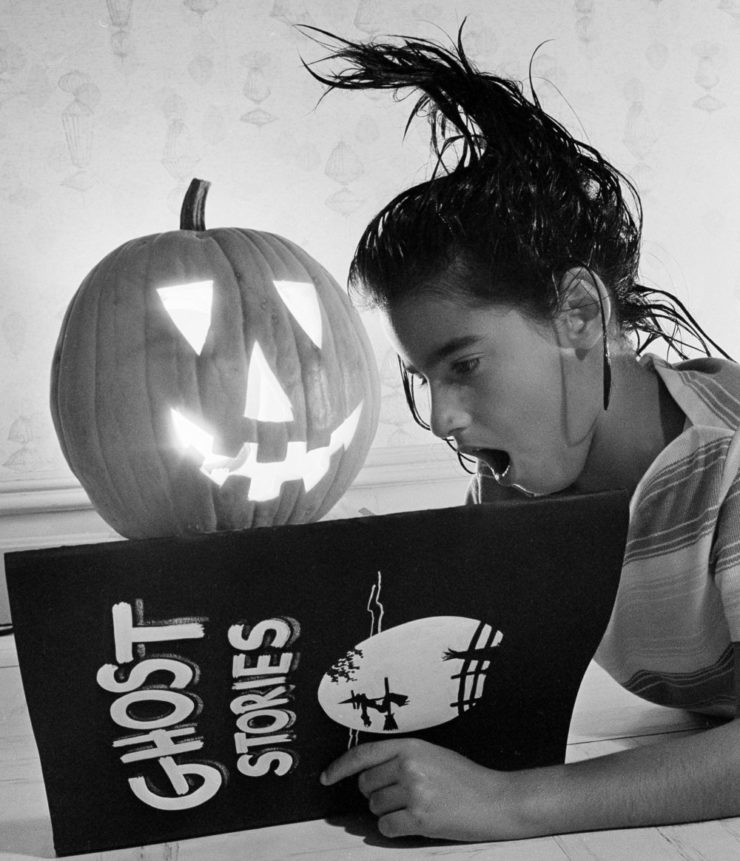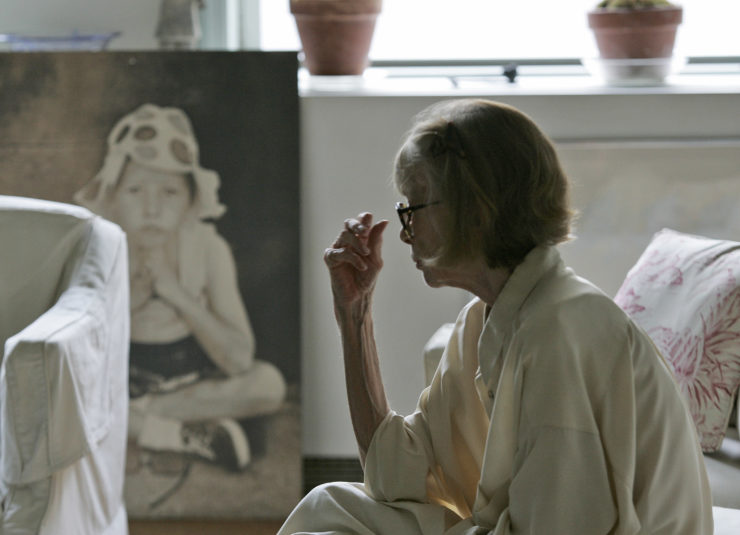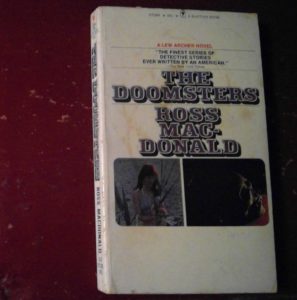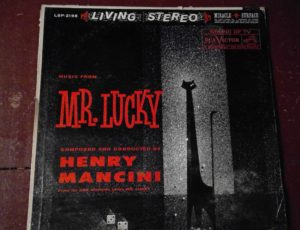
An unidentified girl reads a hair-raising story on a pre-Halloween night in 1964.
For Halloween week, we did a few spooky-themed posts, including an interview with the creator of the scary true-stories podcast “Lore.” This week’s One Great Sentence is a haunting one (in both senses of the word) from Mark Twain, who is one of the all-time masters of the one-liner. And the Joan Didion documentary had me wishing I had worn a Didion costume for Halloween: big sunglasses, that white, angular dress she wore in the famous photo with the Corvette, an ice-cold Coke in my hands. But I don’t think I could have pulled off her tiny, frail form.

"Lore" creator Aaron Mahnke.
This American Afterlife: Aaron Mahnke and the spooky podcast (and, now, show) “Lore.” It’s the smash-hit podcast that was almost killed before it was even born. (Cue eerie-lonely piano music.) Aaron Mahnke was on the verge of spiking a sprawling essay he’d written with outtakes from his supernatural research. With the document hovering over his computer’s trashcan, he paused. And that made all the difference. In the three years since, “Lore,” a podcast about true-life scary stories, has gained an audience of millions and Mahnke has collected an agent, a multiple book deal and an Amazon Prime TV show featuring his work. “This is a dream come true. Especially for a storyteller,” he says. “I get to take these tales and present them in different mediums — audio, visual and print — and let new audiences enjoy them in their own way. The story has become the star, and that makes me very happy.
The soundtrack: “Mysterons,” by Portishead. First you hear the spooky theremin (which hadn’t been used so effectively since “Good Vibrations”). And then the stuttering drum machine kicks in, and the horror-show keyboards. The lyrics are stream-of-conscious, with a sinister undertone. Definitely has a great Halloween vibe.
One Great Sentence
“Then away out in the woods I heard that kind of a sound that a ghost makes when it wants to tell about something that’s on its mind and can’t make itself understood, and so can’t rest easy in its grave, and has to go about that way every night grieving.”
Mark Twain, “The Adventures of Huckleberry Finn.” Read why we think it’s great.

Author Joan Didion is shown near a painting of her daughter, Quintana, in her New York apartment in 2007.
The Joan Didion documentary: A nephew’s loving portrait of “a cool customer.” In her memoir about the death of her husband, John Gregory Dunne, Joan Didion writes about the night she lost the man who can only be described as her other half. She recalls how a social worker described her to a doctor: “She’s a pretty cool customer.” This clearly strikes a nerve. “I wondered what an uncool customer would be allowed to do,” she writes in “The Year of Magical Thinking.” “Break down? Require sedation? Scream?” Didion is not a screamer. She feels things deeply, but on the surface – as a writer and a grieving widow alike – she appears the dispassionate observer. That idea runs through the new Netflix documentary “Joan Didion: The Center Will Not Hold,” directed by her nephew Griffin Dunne. Although it is a loving portrait of this great American writer, it isn’t sentimental, repeatedly acknowledging what Didion called “the cool-customer effect.”
The soundtrack: “Joan Didion,” by Jonathan J. Bower. This is how you know you’re cool: Three songs on Spotify are named after you. I’d never heard of Bower (or, for that matter, Sharks’ Teeth or KOOL A.D. — whose song has a Portishead triphop feel — who perform the other two), but clearly he’s a fan. “Thought we’d be our favorite story/I want to be a Joan Didion.”
What I’m reading online: “How Joan Didion the Writer Became Joan Didion the Legend,” by Lili Anolik. I reference this Vanity Fair article in the post above, but it deserves a separate mention. It came out a year ago, but it still has the power to rattle the Didion cult’s cage. Here’s a bit from the second graf: “I’m talking about the canonization of Didion, Didion as St. Joan, Didion as Our Mother of Sorrows. Didion is not, let me repeat, not a holy figure, nor is she a maternal one. She’s cool-eyed and cold-blooded, and that coolness and coldness—chilling, of course, but also bracing—is the source of her fascination as much as her artistry is; the source of her glamour too, and her seductiveness, because she is seductive, deeply. What she is is a femme fatale, and irresistible.”
“Honky-Tonk Man,” by David Ramsey. Oxford American is such a reliable source of good writing. In this piece, Ramsey beautifully weaves the story of his good-ol-boy father-in-law — “He tried being a hippie once, he said, but couldn’t abide the non-violence (too many people needed to get their asses kicked) — with the story of country singer Gary Stewart. I adore this passage about the crash of his meteoric success: “Nashville concluded he was too bleak, too weird, too rock & roll, too haywire. Too disturbing and too disturbed. Too much. He could be hammy—his sole number-one hit was titled “She’s Actin’ Single (I’m Drinkin’ Doubles)”—but no one careened into barstool pathos quite like Stewart, with quite the appetite for resignation.”
On eBay, a fantastical, earnest world of haunted dolls, by Katherine Carlson. This Halloween story was so good, it’s hard for me to pick a favorite line. So here are two of them: “Initially, I would click on the dirty, slumped-over grotesqueries right away—but I discovered that once you’ve seen one cracked porcelain face with a dead-eyed pout, you’ve seen ’em all. Instead, it’s the sellers’ storytelling that provides the charge.” And “Just our luck: ‘Haunted Ouija doll – Blinks, Noisy, demonic spirit portal’ ships for free anywhere in the United States.”
 What’s on my bedside table: “The Doomsters,” by Ross MacDonald. This choice for a Halloween-themed book lays bare the fact I don’t have any actual horror fiction (or even nonfiction) in my library. But the title is great, and you’ve got to love this line from the back cover: “Purissima was a little town pretty as a postcard. But the message it had for Lew Archer was written in blood with a black border around it.” And word to the wise: Never pass up a chance to read Ross MacDonald.
What’s on my bedside table: “The Doomsters,” by Ross MacDonald. This choice for a Halloween-themed book lays bare the fact I don’t have any actual horror fiction (or even nonfiction) in my library. But the title is great, and you’ve got to love this line from the back cover: “Purissima was a little town pretty as a postcard. But the message it had for Lew Archer was written in blood with a black border around it.” And word to the wise: Never pass up a chance to read Ross MacDonald.
 What’s on my turntable: “Mr. Lucky,” by Henry Mancini. I used to have a series of nine album covers framed on my dining room wall. They were a rotating art gallery, and this one was among them. The artwork of the black cat, one eye open (not winking, somehow, but something more chilling), its tail straight up, really grabs me. And it’s very clever, playing the superstitions about black cats against the words “Mr. Lucky,” which apparently was an ill-fated Blake Edwards TV series.
What’s on my turntable: “Mr. Lucky,” by Henry Mancini. I used to have a series of nine album covers framed on my dining room wall. They were a rotating art gallery, and this one was among them. The artwork of the black cat, one eye open (not winking, somehow, but something more chilling), its tail straight up, really grabs me. And it’s very clever, playing the superstitions about black cats against the words “Mr. Lucky,” which apparently was an ill-fated Blake Edwards TV series.
If you want to chat about storytelling (or music), I’m Storyboard editor Kari Howard, and you can reach me at editor@niemanstoryboard.org. Or you can find me at @karihow on Twitter.


